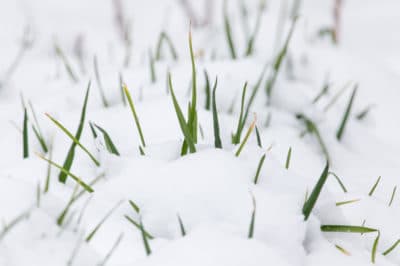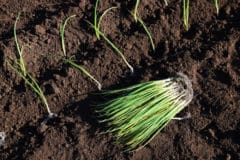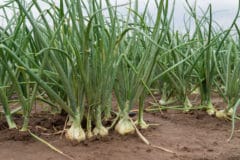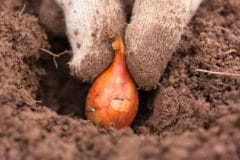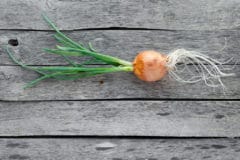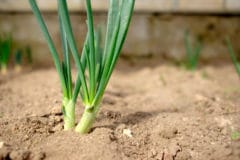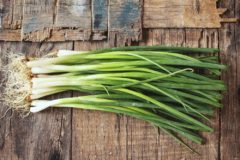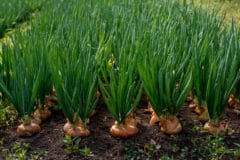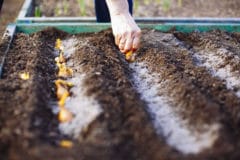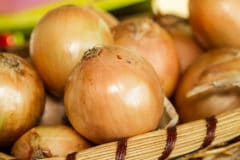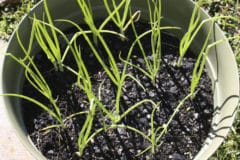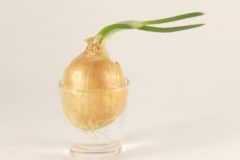Planting Onions after Onion Snow
Even if you don’t see any onion snow, start planting your onions in late spring, as soon as the soil is ready for tilling. The temperature should be about 40°F (4.4°C). Check your extended forecast before planting to be sure that the temperature won’t plunge below 20°F (-6.6C) because you’re onion seedlings will freeze. Whether you’re planting seedlings or onion sets, you plant them using the same methods.
Best Soil Conditions for Planting Onions
If you plant your onions in the right soil conditions and in a sunny location, you’ll have healthy, large onions at harvest time. Keep these conditions in mind when choosing a spot for your onion patch:
- Fine, loose loam
- Excellent drainage
- Nitrogen rich
- 6.6 to 6.8 pH
Make sure the area you choose has no standing water, rocks, stones or gravel. All of these things can decrease the growth of onion seedlings. If you see any hard clumps of soil, crush them into a fine texture. You can also mix sand into the soil for better drainage. Adding compost or other organic matter to your garden soil encourages onion bulbs to grow larger.
Spacing for Onions
After working your garden soil into a fine texture, make furrows that are one-inch deep. Separate the furrows in rows about 14-inches apart. You want to make sure that the onion bulbs have plenty of room to grow, as well as enough space for air circulation.
After making your rows, place your onion seedlings or sets three to four inches apart. If you know that your onion variety has large bulb growth, space your rows further apart, as well as the space between the onion plants.
Planting Seedlings
If you’re planting onion seedlings rather than bulbs, you have a few extra steps to do before planting them in the soil. Trim back any tall, thin stems to about three inches from the roots. By trimming the onion tops, more nutrients enter the roots to form large bulbs. After you dig your furrows, follow these steps for planting your onion seedlings:
- Place the seedling roots into the furrow.
- Press the seedling gently into the soil.
- Cover the roots with soil.
- Water the onion plants.
Taking Care of Onion Plants
Once you have your onions planted, they require very little maintenance. Just water them each week, allowing the onion patch to dry out between watering times.
As weeds develop in your garden, pull them out or carefully use a hoe to remove them.
You want to make sure that the weeds don’t block the sun from keeping the soil dry because your onions will rot if left in moist soil. If any onion bulbs become dislodged from underground while weeding, push them back into the soil. Spreading organic mulch between your bulbs and rows can help with weed prevention.
Picking Onions
When your onions reach maturity, the onion leaves will turn yellow, tip over and dry up. This usually happens from mid to late summer. At this point, stop watering the onions, so they can dry out faster. Pull your onion bulbs out of the ground, allowing the onion tops to dry out completely before harvesting them. Curing takes about two weeks. After curing, gather your onions for storage.
Now, just wait for the next springtime onion snow, and start all over again.
